#nasa moon kit
Text
Shaun the Sheep
"Although it might be a small step for a human, it's a giant leap for lambkind," said European Space Agency's David Parker of Shaun the sheep's space trip. Shaun is flying in the Artemis 1 Official Flight Kit (OFK) 🛰️🚀


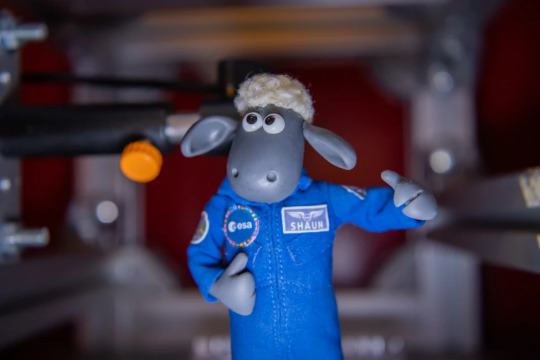
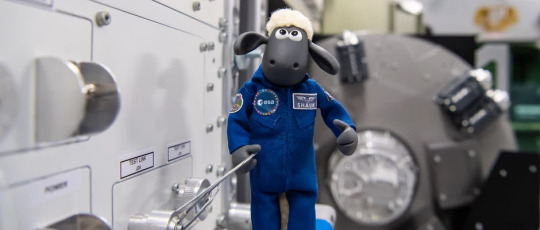
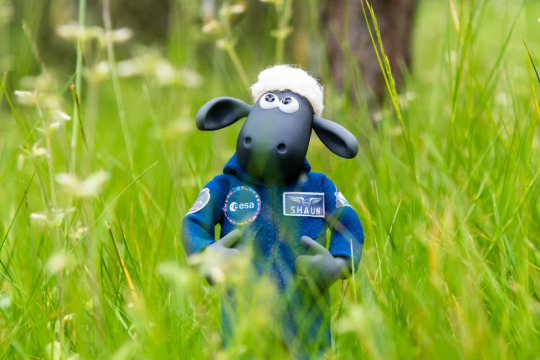
Photo credit: European Space Agency via Space.com /BBC Radio 4 Today/Aardman via Science Focus 🛰️🚀
#shaun the sheep#artemis 1#artemis moon rocket#official flight kit#space travel#european space agency#artemis rocket#lambkind#shaun the sheep doll#nasa#nasa moon mission#friday fun#aardman#animation#december#apollo 17#50th anniversary#space
40 notes
·
View notes
Text
Tornado Quest Top Science Links For November 19 - 26, 2022 #science #weather #climate #cop27 #climatechange #drought #astronomy
Tornado Quest Top Science Links For November 19 – 26, 2022 #science #weather #climate #cop27 #climatechange #drought #astronomy
Greetings everyone! I hope this week’s post finds all of you well. If you celebrated the American thanksgiving holiday, I hope it was a pleasant day for all. Winter is making its presence known across much of North America. A recent record breaking snowstorm in New York state is one example. Therefore, I’ll continue posting winter weather safety information this week with helpful tips on…

View On WordPress
#aerosols#air quality#astronomy#climate#climate change#climate change denial#climate crisis#climate emergency#climate summit#climate talks#climatechange#cop27#critical thinking#drought monitor#emergency kit#europe#extreme weather#human behavior#moon#nasa#orion#public health#science#science denialism#science literacy#snow#snow storms#snowfall#stockholm university#uk
0 notes
Text



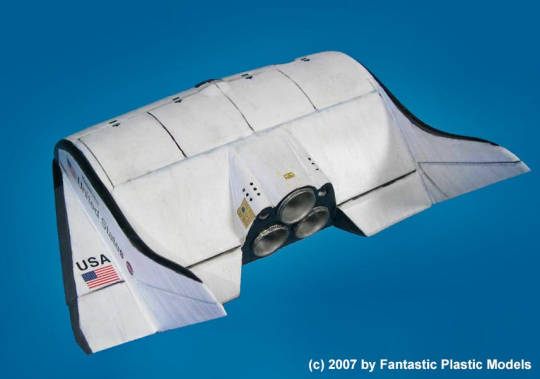
"As the Apollo moon program wound down in the early 1970s, NASA's attention turned toward the next phase in its manned space agenda: the development of a reusable 'space truck' that could ferry men and material into low orbit quickly and cheaply.
Various designs and configurations were proposed and evaluated. All had their strengths and weaknesses. In 1972, North American Rockwell -- one of America's top aerospace contractors -- asked engineer Harry Scott to develop a design that would minimize the propose craft's length without sacrificing cargo space. His solution was to turn the cargo bay sideways, resulting in this unique 'flying breadbox' concept.
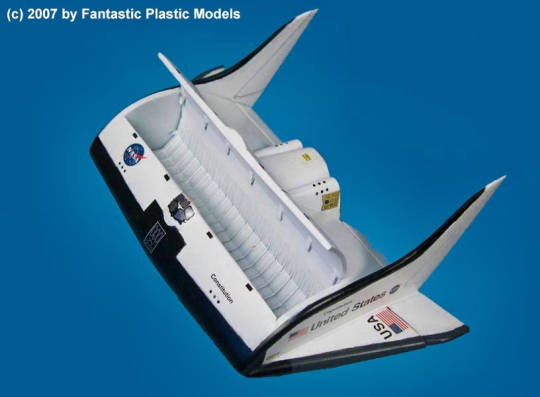


Although theoretically practical, North American Rockwell's Shuttle Concept C-0157 never developed beyond the proposal stage."

"Released in early January 2007, this solid-cast resin kit was patterned by Scott Lowther, cast by Controlled Energy Designs and featured custom decals by JBOT."
1/144 scale model by Allen B. Ury of Fantastic Plastic: link
#Space Shuttle#Space Shuttle Development#Space Shuttle Program#Space Shuttle Phase B#Phase B#NASA#model#artwork#1970s#North American Rockwell#Rockwell International#C-0157#my post
30 notes
·
View notes
Note
I've just found your fics - do you think Bradley ever goes to the moon?!
first, i’m obsessed with this thank you!?! and second, no. no, i don’t think bradley makes it to the moon in their current series 😩. she may tease him by threatening to buy him one of those blue origin space flights for his birthday, but they try their best to abstain from anything jeff bezos related in the house 🫡 so the rocketman remains earth bound
but in my dreams and the au i probably will never finish writing or get to even the slightest sharing point, yes he does make it to the moon after they move to texas (she hates it (respectfully)) and he joins nasa and goes on one of the artemis missions and i recreate the entire bracelet/crater scene from first man because why not explain the large age gap between gil and maggie in a terribly tragic way set to the background of the most remote place in the solar system?
edit: i found this in my google docs
In space, every kilogram, every gram, every milligram counted. The number of screws in the tool kit was just enough for two spares, Bradley was allowed 18 cashews every other day, there were only five buttons on the airlock keypad because six would’ve been too heavy. Every kilogram, every gram, every milligram counted.
So, why was Bradley standing on the edge of the Shackleton Crater with the tiny, pink beaded bracelet Gil had made for his would-be baby sister in his hand? There was a flower bead in the middle - a sunflower. Why did he bring it? Why did you let him? Why did you let him come here after everything?
Maybe someday, someone, somewhere would find the bracelet and wonder how it got there? Whose bracelet was it? Why had someone brought it up there when weight was so precious?
youtube
5 notes
·
View notes
Text
i really do love reading comics with the ads and everything left in because you get shit like a comic from 1969 with an ad for a model rocket kit and the ad copy is like "NASA is sending men to the moon soon!"
3 notes
·
View notes
Note
Pmv idea anon! Maybe I’ll just post every few weeks or so if I come up with something while listening to music, but - here’s one I’ve had rolling around in my head for a few days!
A Tigerclaw pmv to the song NASA is on your side by everything everything, mainly about his youth and how Thistleclaw, his mentor manipulated his emotions to turn him into something else, and focusing on Tigerpaw’s confusion - slowly becoming apathetic and resolute in his violent means. It’d frame him sympathetically as internally conflicted and secretly questioning himself, but reassuring himself with the idea that StarClan is on his side. The lyrics like “is it a boy? Or a girl? Or a gun” and “they’re gonna make a death star out of you” call back to how in a way Thistleclaw only really saw Tigerpaw as an object to further his own ideals, how he never cared about him. I imagine it’d end on a dying tigerstar’s flashback of his kit self and his mother leopardfoot in the nursery, when Tigerkit sees the full moon and lipsyncs the lyrics “treasure in the sky” and leopardfoot smiles at him, kind of a solemn reminder of the potential he had - but, threw away.
#pmv anon#text#warriors#warriorcats#warrior cats#wc#tigerstar#wc tigerstar#thistleclaw#i'd have to listen to that song#this sounds good tho!
8 notes
·
View notes
Text
Space Gym: The Saga Begins
Hi. I'm Kit, one of the cohosts of the astronomy and mythology podcast Starry Time. Those of you who have listened to the pod know that my sister (and cohost) and I love space.
Lately, I've been working on a project that I call Space Gym. And I wanted to provide a bit of a chronicle of the journey -- this post has the origin story and a before photo.
So, settle on in for a little story time!
My partner (BoP) and I are working to decorate our new home. Our living room has some empty walls in need of pictures. I proposed we create a set of the NASA space tourism posters and put them up in our living room.
I mean... look at these! THEY. ARE. AMAZING!

Anywho, the conversation went like this:
BoP: Kit, that is very nerdy. Perhaps too nerdy for our main living space. Like, is this the impression we want to make to everyone visiting our house?
Now, to BoP's credit, our bedroom already features 6 prints of the moon and I do have theme park maps all over my office/the guest room. Still, I've loved these pictures for so long. And gosh-darn it, I wanted them in my house.
Me: BoP. We are nerdy. And they need to go somewhere in our house.
Him: What about your office?
Me: I've already put pictures on all the walls!
Him: Hm.
Me: WHERE AM I SUPPOSED TO PUT THEM?! THE GYM??
Here's the space that became our gym from before we moved in:

So. Yeah. It's in the basement of our home. And my friends call that sponge wall "murder wall," b/c, well, for obvious reasons.
Conversation continued:
I pause for a few moments. The idea gathering mass.
Me: BoP. Oh my god. Yep. They are going into the gym! I'm going to make the entire gym SPACE THEMED!!! I'll paint a mural and we'll put up the posters, and it will be so amazing!!!!!!
BoP: I mean, you can do that if you want. But, you have never painted a mural...
Me: MINOR DETAILS!
Him: Okay, well, you can make a space-themed gym, but I don't want to help. That's my condition.
Me: Excellent!
And from there, I told pretty much everyone I talked to about this idea of a space-themed gym. A Space Gym, if you will. The next post will show my test nebulas and early efforts!
3 notes
·
View notes
Photo

50 years ago... Apollo 17 launchday
December 6, 1972, the Apollo 17 astronauts Commander Eugene Cernan, CMP Ronald Evans and LMP geologist Harrison Schmitt were readied for launch.
Moonwalker Cernan wore two NASA-issued Omega Speedmaster chronographs (his lucky charm n° 28 = 105.003 and n° 67 = 105.012-66) and Moonwalker geologist Harrison Schmitt wore his NASA-issued Speedmaster n° 65 = 105.012-66 CB-cased chronograph.
Command Module Pilot Ronald Evans wore NASA-issued Speedmaster n° 61 but also a personal Omega Speedmaster with printed logo, so a 145.022 version. It can be seen under the fireproof underwear at his lefthand wrist.
Evans also worked with the Heat Flow Experiment onboard Command Module “America”, an experiment equipped with a bezelless Speedmaster 145.022-69 chronograph.
Moreover, in his PPK- Personal Preference Kit, Evans carried a Rolex GMT-master 1675 “Pepsi” pilot watch which was carried onboard Lunar Lander “Challenger” to the Lunar surface.
The Apollo 17 Moonwalkers stayed 75 hours on the Moon, during which they conducted 22 hours lunar EVAs, collecting 111 kilograms of Moon rocks & samples.
(Photo: NASA)
#Apollo#Astronaut#Aviator#321#861#1675#NASA#military#montres#MoonwatchUniverse#Omega#Speedmaster#chronograph#Rolex watches#GMT-master#Oyster bracelet#Rolexmagazine#Speedytuesday#Zulu time
4 notes
·
View notes
Photo
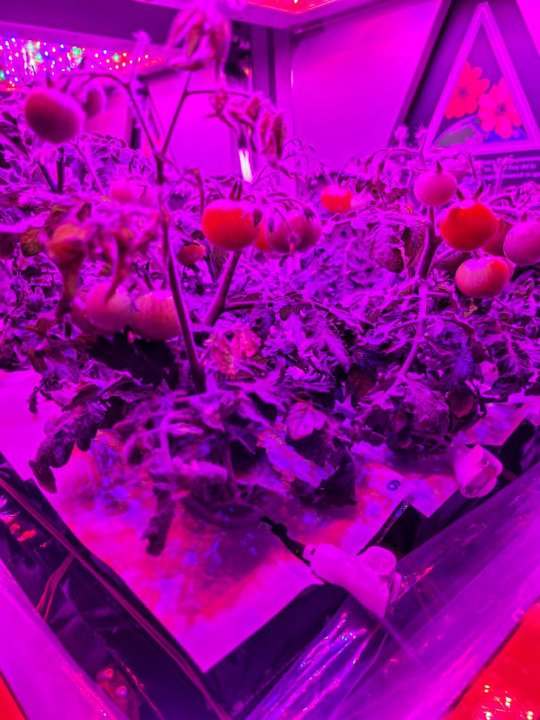
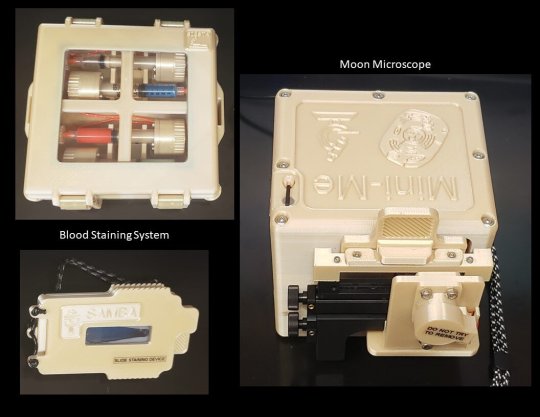
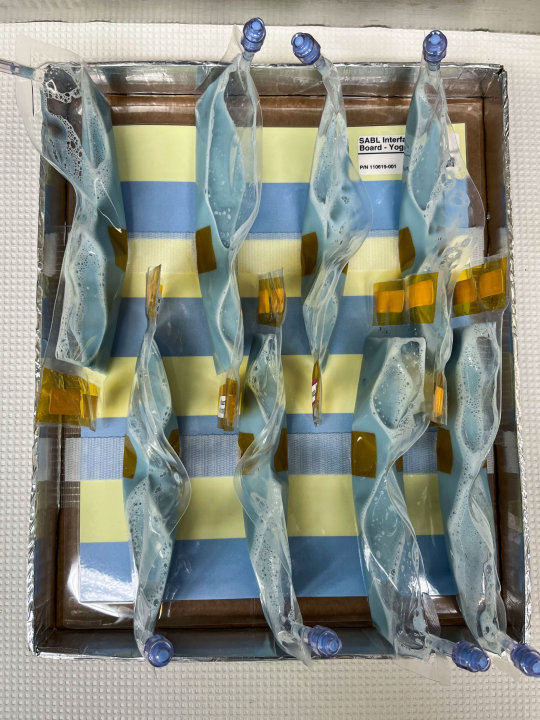
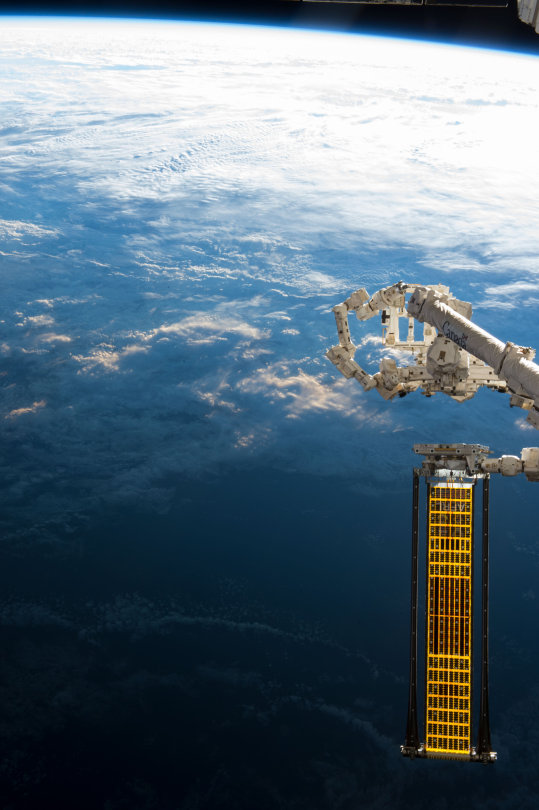
Cutting-edge experiments ride SpaceX's 26th CRS mission to space station SpaceX's 26th commercial resupply mission (CRS) is scheduled to launch to the International Space Station from NASA's Kennedy Space Center in Florida in late November. The Dragon spacecraft carries scientific experiments and technology demonstrations that explore growing plants in space, creating nutrients on-demand, in-space construction, and more. Here are details on some of the research launching to the space station: Big hopes for small tomatoes A continuous source of nutritious food is essential for long-duration exploration missions, and the typical pre-packaged astronaut diet may need to be supplemented by fresh foods produced in space. Researchers have been testing a plant growth unit on station known as Veggie and have successfully grown a variety of leafy greens. Veg-05, the next step in that work, focuses on growing dwarf tomatoes. "We are testing tomatoes, looking at the impacts of light spectrum on how well the crop grows, how delicious and nutritious the tomatoes are, and the microbial activity on the fruit and plants," says Gioia Massa, NASA Life Sciences project scientist and VEG-05 principal investigator. "We also are examining the overall effect of growing, tending, and eating crops on crew behavioral health. All of this will provide valuable data for future space exploration." Massa adds that tomatoes can be eaten fresh and are nutritious and widely consumed. Red Robin, the dwarf cherry tomato variety used in the investigation, grew well during ground testing and produced a large crop of nutritious and palatable fruit. Diagnoses on the fly Moon Microscope tests a kit for in-flight medical diagnosis that includes a portable hand-held microscope and a small self-contained blood sample staining device. An astronaut collects and stains a blood sample, obtains images with the microscope, and transmits images to the ground, where flight surgeons use them to diagnose illness and prescribe treatment. "We do not have a profound clinical problem on the space station, but crew members do experience changes in their immune systems," says NASA immunologist and principal investigator Brian Crucian. "During deep space missions, all stressors increase and our ability to care for the crew is reduced, a combination that could increase certain clinical risks. This project is designed to create a diagnostic laboratory capability that is highly miniaturized and compatible with microgravity and operational constraints. An ill crew member could perform the blood smear, imaging, and transmission of images in minutes." The kit could provide diagnostic capabilities for crew members in space or on the surface of the Moon or Mars, as well as the ability to test water, food, and surfaces for contamination. The hardware also may enable improved medical monitoring on upcoming Artemis and Gateway missions. Building bigger structures On Earth, gravity deforms large objects such as the beams used in large-scale construction. Microgravity enables fabrication of longer and thinner structures without this deformation. Extrusion demonstrates a technology using liquid resin to create shapes and forms that cannot be created on Earth. Photocurable resin is injected into pre-made flexible forms and a camera captures footage of the process. The capability for using these forms could enable in-space construction of structures such as space stations, solar arrays, and equipment. "This experiment leverages the microgravity environment to extrude both common and complex branching shapes," says principal investigator Ariel Ekblaw, director of the Massachusetts Institute of Technology Media Lab Space Exploration Initiative. "Our method reduces the time to produce key parts needed for daily mission use and it may support future space construction of large structures like trusses and antennae. The Extrusion investigation builds on our additive manufacturing and in-space self-assembly workstreams." The Space Exploration Initiative supports a range of microgravity and lunar research across science, engineering, art, and design. The experiment is packed inside a Nanoracks Black Box with several other experiments from the MIT Media Lab and is sponsored by the ISS National Lab. On-demand nutrients Supplying adequate nutrition is a major challenge to maintaining crew health on future long-duration space missions. Many vitamins, nutrients, and pharmaceuticals have limited shelf-life, and the ability to make such compounds on-demand could help maintain crew health and well-being. BioNutrients-2 tests a system for producing key nutrients from yogurt, a fermented milk product known as kefir, and a yeast-based beverage. The investigation kicks off phase two of the five-year BioNutrients program, headed by NASA's Ames Research Center and managed by Game Changing Development in NASA's Space Technology Mission Directorate. The program began with the launch of BioNutrients-1 in 2019. BioNutrients-2 employs a smaller system with a heated incubator that promotes growth of beneficial organisms. "This experiment adds follistatin, a protein therapeutic used to maintain muscle mass, as well as the fermented milk products yogurt and kefir," says principal investigator John Hogan of NASA Ames. "We also are testing a new lightweight bag system for effective microbial storage and growth in microgravity and evaluating our food safety techniques." For a third investigation, the researchers plan to engineer a single yeast strain to make up to four nutrient products. The researchers also are working to find efficient ways to use local resources to make bulk products such as plastics, construction binders, and feedstock chemicals. Such technologies are designed to reduce launch costs and increase self-sufficiency, extending the horizons of human exploration. Adding solar power Two roll-out solar arrays, or iROSAs, launched aboard SpaceX-22 and were installed in 2021. These solar panels, which roll out like a rug or a yoga mat using stored kinetic energy, expand the energy-production capabilities of the space station. The second set, launching in the trunk of SpaceX-26, provides a 20 to 30% increase in power for space station research and operations. "The first two arrays have been performing outstandingly well," says Matt Mickle, development projects senior manager at Boeing. "The solar cells are immensely more powerful than previous generations. We made minor modifications to the hardware for subsequent launches that improve operational efficiency." These arrays, the second of three packages, upgrade 50% of the station's power channels. Roll Out Solar Array technology was first tested on the space station in 2017. ROSA has been used on the NASA DART asteroid mission and is planned for use on the Gateway lunar outpost, a vital component of NASA's Artemis mission. The iROSA program provides a great example of using the space station as a proving ground for the technology and research needed to explore farther into space. Easing gravity transitions Travelers to space all face the transition from one gravity field to another. On future exploration missions, astronauts may encounter three different gravity fields: weightlessness while traveling in space, the gravity of another planet, and Earth's gravity when they return. These transitions can affect spatial orientation, head-eye and hand-eye coordination, balance, and locomotion and cause some crew members to experience space motion sickness. The Falcon Goggles hardware captures high-speed video of a subject's eyes, providing precise data on ocular alignment and balance. "These goggles could better inform our researchers of the impacts of microgravity on crew members and their ability to adapt and work in new gravities," said Dr. Cherie Oubre, deputy flight scientist with NASA's Human Research Program. "Devices like this will be invaluable as we work toward preparing astronauts for long-duration exploration missions to the Moon and beyond to Mars, and also can improve similar technologies here on Earth." TOP IMAGE....1 / 1This preflight image shows the Red Robin dwarf tomato used for Veg-05 growing in Veggie hardware at the Kennedy Space Center. Credit: NASA CENTRE IMAGE....Staining reagents and syringe storage box (upper left), staining device (lower left), and miniature microscope (right) for the Moon Microscope investigation. Credit: NASA JSC Immunology/Virology Laboratory LOWER IMAGE....Preflight image of BioNutrients-2 Yogurt Bags. The blue color of their contents comes from the pH Indicator, and the SABL interface board behind the bags provides a reference for the starting and ending colors. BioNutrients-2 tests a system for in-space production of nutrients from yogurt, kefir, and a yeast-based beverage. Credit: NASA Ames Research Center BOTTOM IMAGE....ROSA solar panels on the space station during earlier testing of deployment and retraction in 2017. A second set of iROSA panels launching in the trunk of SpaceX-26 could provide a 20 to 30% increase in power for space station research and operations. Credit: NASA
3 notes
·
View notes
Text
X plane 787 dreamliner manual treadmill
<br> virtual realityvr treadmill
<br> ekto vr
<br> ekto vr boots price
<br> vr shoes
<br> vr moon boots
<br> vr infinite walking
<br>
<br>
<br>
<br> </p><p> </p><p> </p><p>Figure 5.19 Cockpit of A-380 [Airbus 2015], B-787 [Boeing 2015],. aircraft away from its position and the pilot has to steer manually to keep.
The performance of the N3-X, a 300 passenger hybrid wing body (HWB) aircraft with turboelectric distributed propulsion (TeDP), has been analyzed to see if
Explore a huge variety of 787 products at desertcart in Botswana. 24-Hours 18” 1:130 Scale Model Jet Boeing 787 Aircraft Model Kits Display Diecast
Children's attitude towards their toys nurtures them big way. Specifications. Aircraft: Boeing 787; Material: Diecast; Scale: 1-400. - SKU: DARON19811. Gemini
The X-37 project is managed by NASA's Marshall Space Flight Center, the fuselage and wings with the new B787 Dreamliner from Boeing which has the target
Here's the thing about the plane-on-a-treadmill problem: what people forget is that a plane's wheels don't really do anything. They're just there so that </p><br>https://vanivaguted.tumblr.com/post/691664715609489408/xigmatek-gaia-sd1283-manual-high-school, https://vanivaguted.tumblr.com/post/691664715609489408/xigmatek-gaia-sd1283-manual-high-school, https://vanivaguted.tumblr.com/post/691664715609489408/xigmatek-gaia-sd1283-manual-high-school, https://haguvacuf.tumblr.com/post/691664781281820672/mazda-323f-ba-manual, https://haguvacuf.tumblr.com/post/691664781281820672/mazda-323f-ba-manual.
3 notes
·
View notes
Text
Simon Gwozdz: Equatorial Space’s Mission to Revolutionize Spaceflight with Propulsion Technology
Aerospace and Aviation made the landing on the moon possible by Neil Armstrong. We know astronomy, its research, and its exploration with the use of innovative solutions and technological instruments. We have come quite a long way in the scientific study of space, and there will be continuous research and development for better and improved solutions that will help us understand beyond what we already know.

In the Aerospace and Aviation industry like the well-known NASA, scientists, architects, researchers, engineers, etc work together for the government, companies, and organizations to make learning astronomy better with new and improved innovations. Therefore in this article, we discuss one such startup company in Singapore called Equatorial Space which aims to make spaceflights safer and affordable through rocket propulsion. Founded by Simon Gwozdz, Equatorial Space is rapidly gaining momentum.
Simon Gwozdz: Founder and CEO
Simon Gwozdz is an aspiring founder and CEO of Equatorial Space, which is Southeast Asia’s leading rocket propulsion company. He completed his graduation with a Bachelor of Science degree at the National University of Singapore and Arts education from Millennia Institute. He was a Motor Transport Operator at the Singapore Armed Forces (SAF) where he was responsible for safe, efficient, and timely transportation. Later his passion for this sector from childhood led him to start a space launch company.
Simon along with his co-founders thought of entering the New Space Field for some years where he was also learning science and engineering along with astronautics parallelly. He also connected with the local industry, and later the vision to make spaceflight affordable and safe he founded Equatorial Space in the year 2017.
About Equatorial Space
Equatorial Space is Southeast Asia’s leading rocket propulsion company founded in year 2017 by Simon Gwozdz. It has headquarters located in Singapore and aims to make spaceflight safer and affordable. The company launched its first commercially developed prototype of a rocket in the year 2020 which was built with highly differentiated technologies in challenging logistical settings.
The company has made different vehicle launchers that have unique features. Volans is a low-cost and convenient space launch vehicle that is designed with the capabilities of delivering 35-70 kg of payload which also depends on inclination. Volans is the first 100% pyrotechnics and explosives-free launcher that is built with the help of Equatorial Space’s innovative rocket propulsion technology. Next is Dorado which is a responsive launcher designed to deliver small payloads into a suborbital trajectory. It eliminates toxic effluents by producing small amounts of carbon and greenhouse gases. It is also designed to be 100% explosives-free and ships can be fully inert for easy deployment to any range in the world. The Spark (Student Payload Academic Rocket Kit) is the first rocket kit that was developed commercially with payload support for student training. It is 100% pyrotechnic-free and will allow students to conduct space experiments from design to launch.
The technology of HRF-1 fuel delivers high regression rates as well as excellent mechanical and structural properties. The HRF-1 offers structural stability, regression rates between 4-8mm/s, GHS reduction of up to 70%, and density of up to 1600kg/m3. All of these will provide quality and performance with the potential to make low-cost, safer space launchers.
The company has gained supporters and partners along their journey with the visionary goal. Some of them are elev*.vc, Seeds Capital, Farquhar Venture Capital, Space Zone India, aspace, etc. The company has received accolades and awards from the National Additive Manufacturing Innovation Cluster (NAMIC), Hello Tomorrow, and Mohammed Bin Rashid Space Centre. The incubators and accelerators for the company are sourced from techstars_, Q Stations, The Hangar, and the Space Accelerator Programme. Equatorial Space has been identified and propelled in the path to make spaceflights safer and more affordable with its unique rocket propulsion technologies.
Visit More : https://apacbusinesstimes.com/simon-gwozdz/
0 notes
Text
Space habitat reports – Feb.5.2024
Here is this week's selection of videos and news items about space habitats, living in space, and space settlement. Starts with NASA's latest Space to Ground report for the International Space Station:
https://youtu.be/g8MrUHwvlLU
** Expedition 70 Northrop Grumman Cygnus Cargo Craft Arrives at Space Station - Feb. 1, 2024 - NASA Video
Loaded with food, fuel, and supplies, the unpiloted Northrop Grumman Cygnus cargo spacecraft arrived to the International Space Station Feb. 1 where it was installed to the Earth-facing port of the Unity module. Dubbed the “SS Patricia (Patty) Hilliard Robertson” for the late NASA astronaut who succumbed from injuries sustained from a plane crash, Cygnus launched from NASA’s Kennedy Space Center in Florida Jan. 30 on a SpaceX Falcon 9 rocket and will remain docked to the space station for approximately six months. The mission is the 20th Northrop Grumman commercial resupply services flight to the space station for NASA.
https://youtu.be/fb_pzLQ-ujE
** Expedition 70 Northrop Grumman Cygnus Cargo Craft Secured to Space Station - Feb. 1, 2024 - NASA Video
https://youtu.be/Hj2cSf9HG1s
** Expedition 70 Space Station Crew Answers California Student Questions - Feb. 5, 2024 - NASA Video
Aboard the International Space Station, NASA Expedition 70 Flight Engineers Jasmin Moghbeli and Loral O’Hara discussed living and working in space during an in-flight event Feb. 5 with students attending the Emblem Academy in Saugus, California. Moghbeli and O’Hara are in the midst of a science mission living and working aboard the microgravity laboratory to advance scientific knowledge and demonstrate new technologies. Such research benefits people on Earth and lays the groundwork for future human exploration through the agency’s Artemis missions, which will send astronauts to the Moon to prepare for future expeditions to Mars.
https://youtu.be/b1iq7vQiXS0
** What happens to astronauts during space station reboosts? Crew demonstrates - VideoFromSpace
International Space Station crew members demonstrate their motion during a recent reboost of the oribal outpost. NASA astronaut Jasmin Moghbeli explains.
https://youtu.be/ClkXSx6_-OM
** Window to the world in 360° | Muninn - European Space Agency, ESA
Join ESA project astronaut Marcus Wandt inside the seven-windowed cupola, the International Space Station's "window to the world" and and pan around to enjoy the view.
The ESA - European Space Agency-built Cupola is the favourite place of many astronauts on the International Space Station. It serves not only as a unique photo spot, but also for observing robotic activities, arriving spacecraft and spacewalks.
Marcus was launched to the International Space Station on the Dragon spacecraft as part of Axiom Mission 3 on 18 January 2024. His two-week mission on board is known as Muninn.
Follow Marcus’s journey on the Muninn website, check our launch kit in English or Swedish and connect with Marcus on his Instagram and X accounts.
Muninn website: https://www.esa.int/Science_Explorati...
Marcus Wandt's Instagram: / esaastro_marcus
Marcus Wandt's X: / astro_marcus
https://youtu.be/jc7psvWue0I
** Hassell and ESA unveil their concept for a permanent base on the moon - New Scientist
The European Space Agency has unveiled its Lunar Habitat Master Plan, a conceptual design for a scalable moon base.
Commissioned by ESA’s Discovery programme and designed by architectural firm Hassell, the ideas will guide the agency's technological development of such structures, so it can solve some of the issues moon dwellers could face in a future where research, exploration, tourism and prospecting may all form part of a lunar economy.
“More people on the moon in a sustainable way. This is a good picture to have in mind,” says ESA advanced manufacturing engineer Advenit Makaya, who was involved in the design process. The concept aims to address problems that might arise from having people on the lunar surface for extended periods. This includes protecting astronauts from the harsh environment, such as radiation and dust, and dealing with extreme temperatures, lack of water, oxygen and power.
The habitat is designed around a series of inflatable pods that would make minimal contact with the surface, reducing issues with abrasive dust. These would then be protected by a shell made of blocks, 3D printed using lunar soil, known as regolith, that can be interlocked into place over the pods to absorb radiation. We might also be able to get water or oxygen from the regolith. And to mitigate temperature fluctuations, and maximise solar power efficiency, the base would be built on the edge of Shackleton crater at the moon's south pole where it would face the sun for longer.
Both ESA and Hassell admit their design is some way from becoming a reality, but flexibility is at the heart of it. "Is it a case of running before we can walk? I don't think so. These things take a long, long time to plan,” says Xavier De Kestelier, the global head of design for Hassell and the lead architect on the project. “We need to keep on exploring the science.”
–
Learn more ➤ https://www.newscientist.com/article/...
https://youtu.be/9t0kO-mFLfQ
** Ax-3 Mission | On-Orbit Science Briefing - Axiom Space
Since arriving at the International Space Station, the Axiom Mission 3 (Ax-3) crew has been hard at work. Join Dr. Lucie Low, Axiom Space's Chief Scientist, to discuss the various research projects being conducted onboard during this mission.
https://youtu.be/nmcIkKKb1y4
** Expedition 70 Axiom Mission 3 International Space Station Farewell Remarks - Feb. 2, 2024 - NASA Video
Aboard the International Space Station, Axiom Mission-3 crewmembers Michael López-Alegría, Walter Villadei, Alper Gezeravcı, and Marcus Wandt provided farewell remarks February 2 ahead of their scheduled undocking from the space station February 3. The crew has been living and working on the International Space Station since January 20 following a launch from the Kennedy Space Center in Florida on January 18. Axiom Mission-3 is the third private astronaut mission to the space station.
https://youtu.be/qa9jU0b7Fz4
** Gravitics - Latest posting on X:
On January 5th, NASA announced that the agency will increase its investment in next generation space stations by $99.5 million, in another step towards Low Earth Orbit (LEO) commercialization. Blue Origin and Voyager Space, along with Axiom Space are NASA’s primary partners in… pic.twitter.com/Hc2z4ld8qc
— Gravitics (@GraviticsInc) January 27, 2024
** VAST update on X:
We have officially surpassed the 300 employee mark!
We recently held our first all hands of 2024. We continue to be full speed ahead on the development of Haven-1, scheduled to launch no earlier than August 25.
Check out our careers page for more information on our culture,… pic.twitter.com/9KkCU6ju8j
— VΛST (@vast) January 31, 2024
** Starlab Sizzle Reel - Voyager Space on Vimeo
Starlab is a new-era space platform, set to serve a global customer base of space agencies, researchers, and companies. Our space station will ensure a continued human presence in low-Earth orbit and a seamless transition of microgravity science and research from the International Space Station into the new commercial space station era.
See latest announcement: Starlab Space Selects SpaceX’s Starship for Historic Launch | Voyager Space - Jan.31.2024.
Starlab Space LLC (Starlab Space), the transatlantic joint venture between Voyager Space and Airbus, today announced the selection of SpaceX to launch the Starlab commercial space station to low-Earth orbit (LEO). Starship, SpaceX’s fully reusable transportation system designed to carry both crew and cargo to Earth orbit, the Moon, Mars and beyond, will launch Starlab in a single mission prior to the decommissioning of the International Space Station.
“SpaceX’s history of success and reliability led our team to select Starship to orbit Starlab,” said Dylan Taylor, Chairman and CEO, Voyager Space. “SpaceX is the unmatched leader for high-cadence launches and we are proud Starlab will be launched to orbit in a single flight by Starship.”
See also: Starlab—with half the volume of the ISS—will fit inside Starship’s payload bay | Ars Technica - Feb.1.2024.
https://vimeo.com/889731242
** Shenzhou-17 Crew Displays Scientific Research Facilities at Tiangong Station - CCTV Video News Agency
The Shenzhou-17 crew members displayed various scientific research facilities at China's Tiangong space station recently.
https://youtu.be/5zO4I4M8g40
** Other news and articles:
- Ax-3 Nears Departure as Station Crew Picks Up Research | Space Station/NASA - Feb.5.2024
- NASA and Partners Now Target Tuesday for Ax-3 Mission Departure | Space Station/NASA - Feb.4.2024
- Tech for space development:
- NASA’s Laser Navigation Tech Enables Commercial Lunar Exploration | NASA - Feb.5.2024
- The First 3D Printer to Use Molten Metal in Space Is Headed to the ISS This Week | Singularity Hub - Jan.31.2024
- NASA is One Step Closer to Deploying Fission Reactors on the Moon | Universe Today - Feb.5.2024
- NASA’s Fission Surface Power Project Energizes Lunar Exploration | NASA - Jan.31.2024
** Highlight: Winter over Utah - SLC - Provo - Uinta Mtns - Feb 4, 2024 - 11:26 MST - ISS Above
NASA EHDC6 Live views of the Earth from the International Space Station
https://youtu.be/7-5iorwys8U
** Highlight: Colors of the Sahara - Chad - Egypt Feb 3, 2024 8:12 UTC - ISS Above
https://youtu.be/UVpjmdldGiY
** Live Video from the International Space Station (Official NASA Stream) - NASA
Watch live video from the International Space Station, including inside views when the crew aboard the space station is on duty. Views of Earth are also streamed from an external camera located outside of the space station. During periods of signal loss due to handover between communications satellites, a blue screen is displayed.
The space station orbits Earth about 250 miles (425 kilometers) above the surface. An international partnership of five space agencies from 15 countries operates the station, and it has been continuously occupied since November 2000. It's a microgravity laboratory where science, research, and human innovation make way for new technologies and research breakthroughs not possible on Earth. More: https://go.nasa.gov/3CkVtC8
Did you know you can spot the station without a telescope? It looks like a fast-moving star, but you have to know when to look up. Sign up for text messages or email alerts to let you know when (and where) to spot the station and wave to the crew: https://spotthestation.nasa.gov
https://www.youtube.com/live/xAieE-QtOeM?feature=share
====
ISS after undocking of STS-132
=== Amazon Ads ===
Lego Ideas International Space Station
21321 Toy Blocks, Present, Space, Boys, Girls, Ages 16 and Up
====
Outpost in Orbit:
A Pictorial & Verbal History of the Space Station
Read the full article
0 notes
Text
This Week’s Horrible-Scopes
It’s time for this week’s Horrible-Scopes! So for those of you that know your Astrological Signs, cool! If not, just pick one, roll a D12, or just make it up as you go along. It really doesn’t matter. Better yet! Check out “Heart of the Game, Fredonia” and see if they can sell you those D12’s with the symbols on them. Tell them “Shujin Tribble” sentcha. And “Hail, Hail, Fredonia!” Home of the Blue Devil!
Since there’s no theme specifically selected this week, and how the weather in Buffalo brought out ALL THE FREAKS TO THE SHOP… sorry. We’re getting you all of the Weird But True facts that we can find from the nice folks at We Are Teachers Dot Com”.
Aries
What level of biometrics are you familiar with? Retina Scans? Voice Print? Skin Sweat Composition? That’s nuthin’! Take a swing over to the National Library of Medicine and read a research paper by Radhika, Jeddy, and Nithya titled, “Tongue prints: A novel biometric and potential forensic tool”. So This Week… You know that Jr. Detective Kit you got for Christmas? The one with the ink pad to make fingerprints with? We hear that ink is really tasty. You should try it out.
Taurus
You think you’re “You”, but that's not quite right. And no, we’re not going down the Ship of Theseus rabbit hole. Research finds that the average human is around 56% bacteria. So This Week… If you take showers before you sleep and after you wake up you'll be more yourself in no time. That’s a sure-fire way to make you Above Average.
Gemini
In 1838 Samuel Morse made the first public demonstration of his new invention, the telegraph. In 1903, 65 years later, the first powered airplane flight by Wilbur and Orville Wright took place. And in 1969, another 65 years later, Apollo 11’s Lunar Excursion Module, “Eagle”, touched down on the Moon. So This Week… How old are you again? Can you even imagine how things will progress by the time you’re 65? We bet you can’t, but do try.
Cancer Moon-Child
And speaking of the Moon, did you know that it has Moonquakes? It’s TRUE! Every once in a while its surface experiences stresses from the gravitational attraction with Earth. So This Week… be glad you weren’t around for Apollo 12’s mission. Because NASA deliberately crashed the Ascent Stage Lunar Module, “Intrepid”, onto the Moon's surface to get seismic data from it. And since NASA reported that the Moon rang 'like a bell' for almost an hour, people have floated the idea that the Moon is actually a hollow spaceship.
Leo
Tigers don’t just have striped fur, they have striped skin to go with it! And better yet, no two tigers have the same pattern, so they can be picked out from a group if you know who you’re looking for. We know you don’t want to believe us. So This Week… get up close and personal with a tiger, bring along some hair clippers, and buzz-cut the edges of those stripes so you can see for yourself.
Virgo
We know what it’s like for you to go through allergy season. We also know that it gets pretty bad just as the cold sets in and the heater kicks on; all that dust in the furnace vents getting kicked up sucks. At least you can take antihistamines to fight it. You know who can suffer from allergies but can’t just go to the medicine cabinet and get better? Our pets! Dogs can be allergic to pollen, cat dander, and get this… People Dander! So take comfort in knowing that it might not be that your pet actively dislikes you. Maybe you just make them sick with your presence.
Libra
Astronomers have observed some amazing things in the Universe from stars whipping past Super-Massive Black Holes at significant fractions of the speed of light, to the light coming from other galaxies. And what’s special about that light? It has a generally agreed upon colour referred to as, “cosmic latte.” That’s right, the average color in our observable universe is “beige”! So This Week… find that old Gateway Computer Case and build a sleeper PC that shoots fire out the back!
Scorpio
We’re going to spoil some Movie Magic for you, and you’re gunna hate us for it, but… Oh Well! Have you ever seen “Game of Thrones”? Yeah, well… Ok. Fine, maybe you haven’t. BUT… The Night’s Watch cloaks in Game of Thrones were made by shaving and dyeing IKEA rugs to make them look like medieval cloaks. They do this kind of thing all the time. Because it’s cheaper than coming up with something original. So This Week… Don’t watch the original Star Trek when Dr. McCoy is using those silver surgical tubes to operate on someone. Those were actually Salt and Pepper shakers from the commissary.
Sagittarius
If you look up at the sky you might wonder about what’s up there. All the planes and satellites and clouds… OH! Right… Did you know that one cloud can weigh more than a million pounds? You don’t realize just how big clouds can be up there - how much volume they have. And remember, when you increase volume, you decrease pressure. You do remember your basic Earth Science classes right? So This Week… You’re not “overweight”, you’re just in need of more volume. So grow your arms and legs out.
Capricorn
We have to ask.. Are you a Grow-er or a Show-er? Now before you get uncomfortable with this, let’s take this over to Paris and piss off the Frenchies. Did You Know the Eiffel Tower gets taller in the summer; specifically up to 15 centimeters (6 inches) taller due to thermal expansion. So This Week… You’ve got nothing to feel inadequate about. You just need to date in the summer instead.
Aquarius
Here’s a little something to think about. Most of us know that the number “Zero” was the last number added to the Arabic Number System; but do you know what the most recently added letter to the English, or Roman, Alphabet is? Jokes aside, you’ll jump for joy to hear that it was the letter “J”! It dates back to 1524 when it was separated from its twin, the letter “i”. So This Week… Re-read the story of Romulus and Remus, but not the version with Starfleet in it.
Pisces
We all know bananas are radioactive, but do you know what other common house-found items are also radioactive? Potatoes, spinach, Brazil nuts, oranges, and granite countertops can all set off your geiger counter. But let’s stick to bananas a little more. Do you know how many you’d have to eat at once to get a dose that would kill 50% of the population? You’d have to eat 50 million bananas at once! So This Week… We know you can fit at least two in your mouth at once, but for crissakes, would you PLEASE STOP holding them like that when you eat them! You’re making all the normies uncomfortable!
And THOSE are your Horrible-Scopes for this week! Remember if you liked what you got, we’re obviously not working hard enough at these. BUT! If you want a better or nastier one for your own sign or someone else’s, all you need to do to bribe me is just Let Me Know - or check out the Ko-Fi page ( https://ko-fi.com/icarusthelunarguard )! These will be posted online at the end of each week via Tumblr, Twitter, Facebook, Discord and BLUESKY.
1 note
·
View note
Text
Election Conspiracy
"Do you really think NASA is dumb enough to fall for fake sensors?"
That was a response to my previous post on moon landings. The question isn't "Is NASA dumb?" it's "Could the entity NASA be feasibly tricked in such a manner?" AND Is there an agency willing to pool enough resources to make that happen.
So with election fraud, there was in fact several incidents and analysis of the technical hardware brought up that suggests that the interfaces used to interface with the electronic voting system could feasibly be hacked.
University of Michigan Alumni's association posted an article with this exact premise.
In a study on voting machines in a lab setting, they were able to find vulnerabilities and exploit them.
What isn't clear is whether or not the producer of the voting machines had corrected for those vulnerabilities, or if those particular hacks were reproducible on official voting hardware.
And what is only Alleged is voter fraud happening on such a scale.
These two things get conflated in the global and political sphere, where "We hacked them..." Is appended to the Allegations that the election was hacked.
So it sounds like "We know the federal election was hacked, because we [The UofM alumni association] hacked the election".
USB and other ports, are commonly defaulted on computer hardware. There's also the possibility of somebody bringing in a soldering kit with them, disassembling a voting machine, installing a port to hack a machine, reassembling it, and nobody noticing in an official setting.
"What're you doing in that voting booth? ", "Uhh... Masterbating! Don't come in here!"
A person involved in such an attack would have to know the hardware, the firmware, the operating system, and the network infrastructure in order to create such an attack. Yes it is possible. Likely? Not without enough advanced notice, nor without inside information.
They wouldn't be able to waltz into an election booth and circumvent an election, they'd have to do months of research and planning.
Unless, the people at UoM performed the attack themselves, or released their findings themselves in the days leading up to an election, There's little reason to suspect an attack occurred.
Especially since Trump had a team inspecting the hardware. Or did he? If not, what was he doing?
Now, what circumstances would make such an attack likely? If the hardware they used, the firmware, the operating system, and the network infrastructure they used were off-the-shelf products.
I hesitate to say that internalized development and proprietary machines would be a cure-all, because that just means they can hide vulnerabilities, which would then be vulnerable to social engineering.
Fact is; if the digital system is vulnerable, then so is the paper system. Because anybody can fill out any voter ballot with anybody's information.
That's why we have people verifying IDs at the door, and early voters need to register for an official ballot. Hand changing those official ballots would mean a bigger conspiracy than the U.S. could withstand, it might be doable at a county level, but then they'd probably not want "your kind" in that county anyway. You can't stop something if you're the odd person out in that instance.
Paper ballots could also be vulnerable if, for some reason, the Postal Service was weakened or had employees who wanted to cause damage.
But we don't know, because there's not enough public literacy on the topic.
0 notes
Text
'WORD OF THE LOURD: Baha' Reaksiyon
youtube
Word of the Lourd: Baha
Sa isang episode ng ‘Word of the Lourd’ na pinamagatang ‘Baha’ ay pinag-usapan ang madalas na pag-baha sa Pilipinas. Ika nga ng host na si Lourd ay kada taon ay ini-expect nga naman natin ang baha, pero bakit nga ba parang taun-taon na lang ay parang gulatan pa rin ang mga tao?
Ang Pilipinas ay isa sa mga disaster-prone na mga bansa sa mundo, ito ay nakakaranas ng 18-20 na bagyo kada taon, at ang pagbaha ay hindi na rin bago rito. Kabilang na rito ang bagyong Ondoy at bagyong Yolanda na sya nga namang nagpayanig ng mga lugar na tinamaan ng mga bagyong nasabi. Sa pagtanggap ng news disaster na ito, nagulat ang mga tao. Inihalintuad din ang gulat ng mga tao sa init na nararamdaman ngayon. Ang inda ng mga taong, “ang ineeett!!” na para bang itong ang pinaka-unang hot summer sa Pinas.
Kaniya namang sunod na diniscuss ang unprepared situation ng Pilipinas sa mga ganitong panahon. Isang tropical country ang Pilipinas, hindi nga namang tulad ng ibang mga bansang nakararanas ng Autumn at Winter, ngunit ang ibang mga bansang tropical naman daw ay prepared sa mga events na tulad ng pagbaha. Let’s take our neighbouring countries like Thailand at Indonesia as an example. Ang Bangkok, Thailand ay nagtayo ng tunnel kung saan may storage tank o capacity reservoir na nag-iipon sa tubig baha upang magamit sa tag-tuyot na panahon. Sa Jakarta, Indonesia naman ay magtatayo ng isang Capital sa gitna ng kagubatan sa East Kalimantan.
Sa sitwasyon at kaayusan ng Pilipinas, talagang kailangan ng mahigit ng paghahanda sa mga ganitong pangyayari dahil hindi ito nago-occur lamang once in a blue moon. Nabanggit na para maiwasan ang pagiging shocked ng mga mamamayan sa pagbaha, flashflood, at iba pang disasters ay matuto nga namang maging handa sa inaasahang events. Katulad na lang ng pagpapatibay ng bubong (para hindi ito liparin dahil sa bagyo), pagpapataas ng ating flooring, pagpa-plano ng emergency route, o 'di kaya' nama'y ang pag'y maghanda ng mga first aid kit at iba pa.
Hindi maipagkakaila ang kagalingan ng mga Pilipino sa pagtayo pagtapos ng hindi magandang pangyayari, ngunit hangga't maaari ay dapat na maiwasan ang mga ganitong bagay. Sa paghahanda, kasama na rin dito ang pagme-maintain ng ating kapaligiran. Ang mga drainage at canal na syang tumutulong sa maayos na pagdaloy ng tubig t'wing bumabagyo'y kailangang regularly nililinis para naman maiwasan ang pagbara nito. Tandaan rin na nasa sarili nagsisimula ang magandang pangyayari sa paligid, kaya nama'y ang simpleng pagtapon ng basura sa tamang lalagyan ay nakakatulong na rin sa pag prevent ng floods at flash floods. Ika nga ni Howard Zinn, "small acts, when multiplied by a million people, can transform the world".
#wordofthelourd#episodebaha#flood#news5#school#schoolactivity#Komunikasyon#sidhaya11#sidhaya11:komukiasyon#Youtube
1 note
·
View note
Photo

50 years ago... Apollo 17 underway
December 6, 1972, the Apollo 17 astronauts saying goodbye to family members during walkout to the astrovan, Commander Eugene Cernan, CMP Ronald Evans and LMP geologist Harrison Schmitt.
Note how Cernan’s Speedmaster had the chronograph hand running.
Moonwalker Cernan wore two NASA-issued Omega Speedmaster chronographs (his lucky charm n° 28 = 105.003 and n° 67 = 105.012-66) and Moonwalker geologist Harrison Schmitt wore his NASA-issued Speedmaster n° 65 = 105.012-66 CB-cased chronograph.
Command Module Pilot Ronald Evans wore NASA-issued Speedmaster n° 61 but also a personal Omega Speedmaster with printed logo, so a 145.022. Evans also conducted the Heat Flow Experiment onboard Command Module “America”, an experiment equipped with a bezelless Speedmaster 145.022-69.
Moreover, in his PPK- Personal Preference Kit, Evans carried a Rolex GMT-master 1675 “Pepsi” pilot watch which was carried onboard Lunar Lander “Challenger” to the Lunar surface.
The Apollo 17 Moonwalkers stayed 75 hours on the Moon, during which they conducted 22 hours lunar EVAs, collecting 111 kilograms of Moon rocks & samples.
(Photo: NASA)
#Aviator#Astronaut#Apollo#chronograph#321#861#NASA#military#montres#MoonwatchUniverse#uhren#Omega#Speedmaster#Moonwatch#Maan#Mond#Mjesec#Luna#Lune#spaceflight#pilot watch#Rolex#GMT-master#RolexMagazine#Zulu time
3 notes
·
View notes